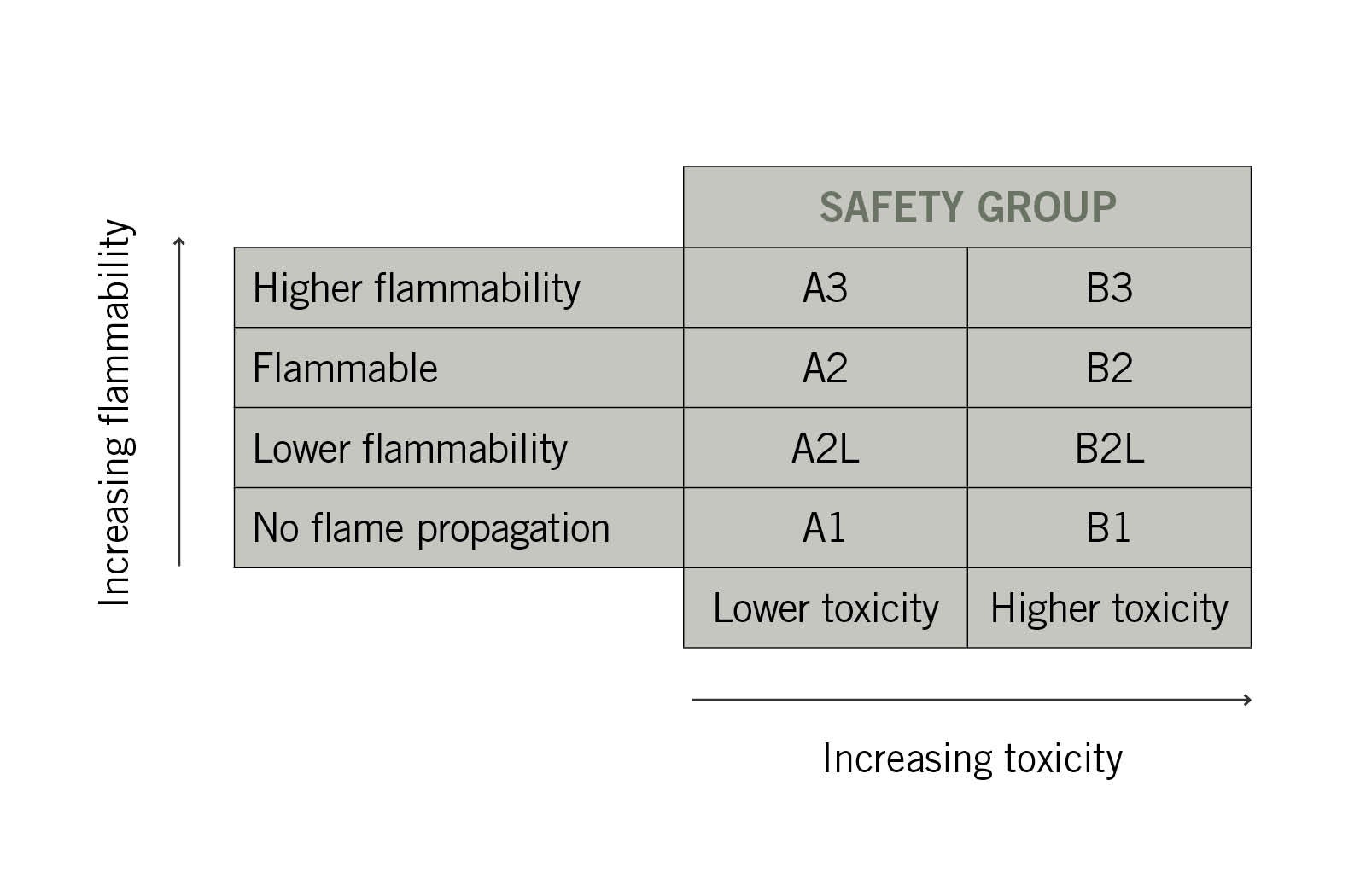Determining the hazard levels of refrigerants in health facilities
Health care facilities managers are constantly under pressure to know what potential hazards lurk in a facility. Fortunately, many helpful resources are available to help facilities managers identify types of refrigerants and their safety level.
Refrigerants have come a long way from the early 1800s, when ammonia, sulfur dioxide and methalchloride were used. Modern refrigerants are far less dangerous to patients and staff, but there are a few things to keep in mind:
- ASHRAE 15, Safety Standard for Refrigeration Systems, and ASHRAE 34, Designation and Classification of Refrigerants, specifically identify and define institutional occupancy in the standard. Hospitals and nursing homes clearly fall within this classification.
- ASHRAE 15, 7.2, defines the refrigerant concentration limits. Reference ASHRAE 34, Table 4-1, for the quantities.

A refrigerant’s safety can be found in ASHRAE 34 (see figure above). The standard’s Figure 6-1 breaks down refrigerants into two categories: toxicity and flammability. Refrigerants with a “B” designation are toxic, and refrigerants with an “A” designation are nontoxic.
The numeric scale represents the level of flammability for the refrigerant. Numeric value of 1 equals no flame propagation and 3 equals higher flammability. A quick check of the two-digit classification will provide the facilities manager with enough information to make an informed decision on the safety of the refrigerant. For example, R-600 propane is designated as A3, higher flammability with no toxicity.
Although flammable refrigerants perform well and pose a minimal risk when used within established standards, each health care facilities manager has the responsibility to evaluate the safety of refrigerants in their facility and make informed decisions regarding continued purchasing.




